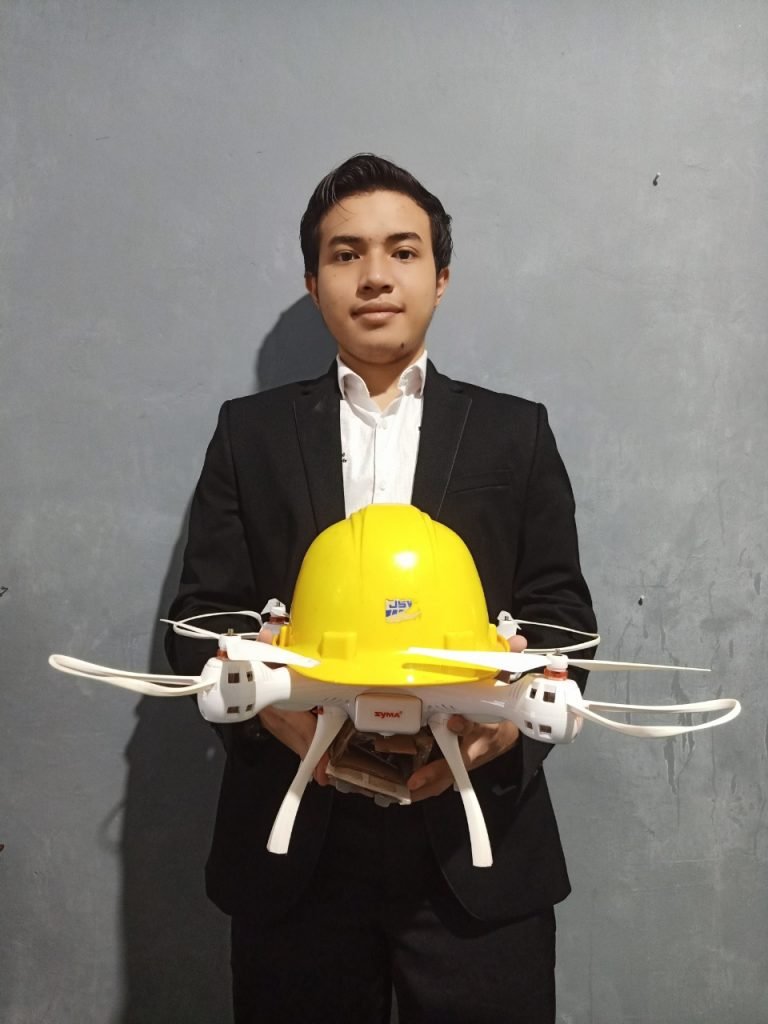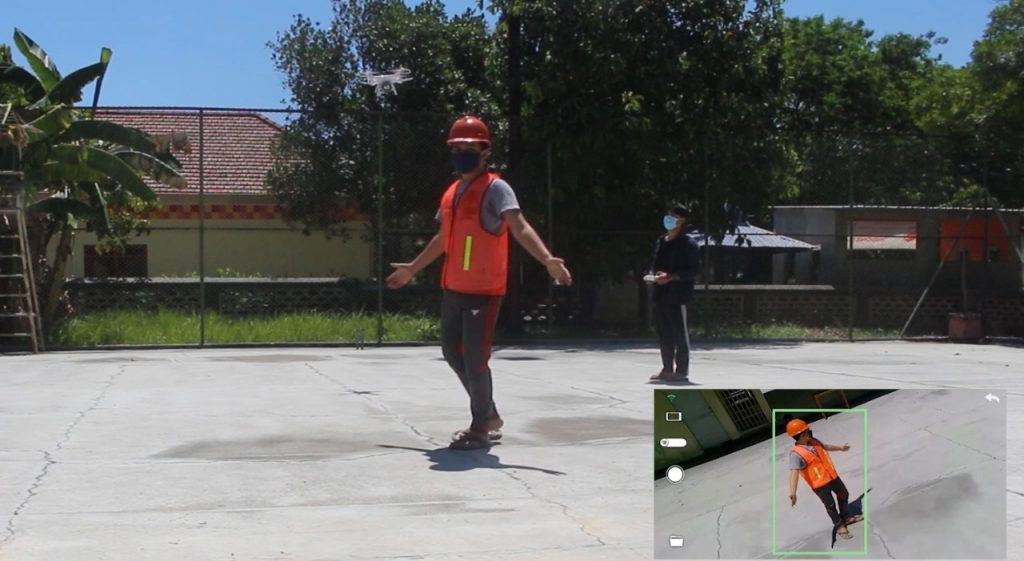ITS Students Create Solutions to Improve Work Safety Named Erasty
ITS Campus, ITS News – Never stop innovating, this time Institut Teknologi Sepuluh Nopember (ITS) students from ITS Bramunastya Team are developing drones to improve work safety. The innovation, Environment and Human Safety Surveillance (Erasty), even managed to get an Honorable Mention at the Expocytar Web 2020 event in Argentina, Sunday (11/10).
The Bramunastya Team leader, Muhammad Adrian Fadhilah, explained that unsafe actions often occur due to the negligence of workers, for example, not using Personal Protective Equipment (PPE). Besides, dangerous conditions that arise in the work environment are gas leaks and sparks that cause fires.
Furthermore, Adrian explained, the supervision carried out in the current work environment is only done manually by individuals using CCTV. According to him, manual supervision has many shortcomings because it has many blind spots and cannot approach unclear points. “Supervision is also limited to a work environment that is dangerous for humans,” said the student of the Department of Industrial and Systems Engineering.

The Bramunastya ITS team leader, Muhammad Adrian Fadhilah, together with the Erasty prototype won awards at the Expocytar Web 2020 in Argentina and the World Invention Competition and Exhibition.
Therefore, under the guidance of a lecturer, Dr Adhitya Sudiarno ST MT, Adrian and his two colleagues created Erasty as a drone technology innovation integrated with Artificial Intelligence (AI) to prevent accidents in the work environment. Through this innovation, they have provided drones with artificial intelligence (AI) and sensors to detect unsafe actions and workplace conditions.
Adrian explained that the AI used by Erasty was a kind of machine learning algorithm called You Only Look Once (YOLO) and made explicitly for object detection purposes. The team consists of Alif Aditya Wicaksono from the Department of Computer Engineering and Hammam Dhiyaurrahman from the Department of Industrial and Systems Engineering. Three of them then train the algorithm by entering 2,323 data labels which are divided into five parameters.
Continued Adrian, after training on the algorithm for one month, Erasty was able to detect objects with human parameters, safety helmets, safety vests, welding jackets and gloves. “The YOLO algorithm is used because it has small storage and is optimal in detecting objects,” explained him.
Adrian and his team also equipped Erasty with intelligence gas sensors and fire concept detectors to avoid unsafe conditions. After testing in the laboratory, Adrian explained that AI Erasty could detect 90.87 percent for about 410 milliseconds. Meanwhile, the intelligence gas concept and flame sensor can see at a distance of up to 120 cm.
This result was enough to make Adrian and the team happy. According to Adrian, the research began in December 2019. It had stalled due to the campus’s closure and the Ergonomics and Work System Design Laboratory due to Covid-19 since last March. “Therefore, Erasty can prevent unsafe actions and conditions from taking drone videos in less than one second,” he said.

Erasty testing process before entering the competition
The results did not disappoint, the Beta version of Erasty managed to get Honorable Mention at the Expocytar Web 2020 held in Argentina. The competition, which was attended by hundreds of participants from several countries in America, Europe and Asia, was organized by Milset America Latin (Amlat), Sarla Rosa-la Parpa Argentina, and RED ARCITECO. Expocytar Web 2020 is an exhibition event for participants who can open business opportunities and share their creations and innovative work in international affairs.
Previously, explained by Adrian, this innovation also won two prestigious awards at the World Invention Competition and Exhibition (WICE), last September. This team won a gold medal in the Applied Physics and Engineering category and won a Special Award from the World Invention Intellectual Property Associations (WIIPA). “The Special Award from WIIPA is a high ranking award,” explained Adrian proudly.
When asked how this idea originated, Adrian admitted that he was inspired by his supervisor, Dr Adhitya Sudiarno ST MT. According to the lecturer called Adith, he was moved when he participated in professional cooperation in the development of Occupational Health and Safety (K3) culture in several Steam Power Plants (PLTU) in Indonesia from 2018 until now. “Alhamdulillah, there are many things we can learn and follow as additional innovation works,” he explained.
Furthermore, Adith said that much remains to be done to perfect Erasty. “The Erasty development agenda for the next stage has been prepared per the research roadmap in our lab,” he said. (fat/sel/ITS Public Relations)
Related News
-
Anticipating Lost Pet Dogs, ITS Students Invent a Tracking Bag
ITS Campus, ITS News —Losing a pet is a sad thing for its owners. To anticipate this, a team
October 12, 2020 19:10 -
ITS Students Integrate Smart City Service Features Through Visionaries
ITS Campus, ITS News — Institut Teknologi Sepuluh Nopember (ITS) continues to prove itself as a home for talented
October 12, 2020 19:10 -
ITS Students Innovate Eco-Quake Building Concept
ITS Campus, ITS News — Along with the development of technology, the construction sector has also experienced rapid growth
October 12, 2020 19:10 -
Great, ITS Successfully Becomes Overall Champion of the 2024 Indonesian Ship Contest
ITS Campus, ITS News — Proving itself as a home for champions, Institut Teknologi Sepuluh Nopember (ITS) managed to
October 12, 2020 19:10
